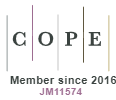Just Accepted
This article has been peer reviewed and accepted for publication. It is in production and has not been edited, so may differ from the final published form.
Convergent, discriminant, and known groups validity of the Behavioral Assessment Screening Tool (BAST) in chronic traumatic brain injury
Abstract
Background. The Behavioral Assessment Screening Tool (BAST), which measures self-reported neurobehavioral symptoms experienced by adults with traumatic brain injury (TBI), was specifically developed as a self-reported measure for remote symptom reporting. Our aim was to assess the convergent, discriminant, and known-groups validity of the BAST among community-dwelling adults with TBI. Methods. We assessed correlations and group differences with previously validated measures in two existing datasets (n=111, n=134). Other measures were: Patient Health Questionnaire (depression), Generalized Anxiety Disorder-7 (anxiety), Positive and Negative Affect Schedule, Frontal Systems Behavior Scale (Executive Dysfunction, Apathy, Disinhibition), Modified Fatigue Impact Scale, PROMIS Fatigue, Aggression Questionnaire (anger, hostility, physical and verbal aggression), and Alcohol Use Disorders Test (alcohol misuse). Results. BAST subscales had stronger correlations with measures of similar (|r|=.602-.828, p<.001) and related (|r|=.364-.589, p<.001) constructs and weaker correlations (|r|<.300) with measures of dissimilar/unrelated constructs. Statistically significant BAST subscale differences (ps<.001) were found (Cohen’s d=1.2-1.9) for known-groups with moderate-severe depression, moderate-severe anxiety, fatigue, problematic disinhibited and frontal-executive behaviors, and alcohol misuse. Results support the construct validity of the BAST subscales. Conclusion(s). The BAST demonstrated good convergent, discriminant, and known-groups validity, supporting its use for remote self-reported symptom reporting to improve chronic symptom monitoring in community-dwelling adults with TBI.
IB24064 Accepted 16 January 2025
© CSIRO 2025



